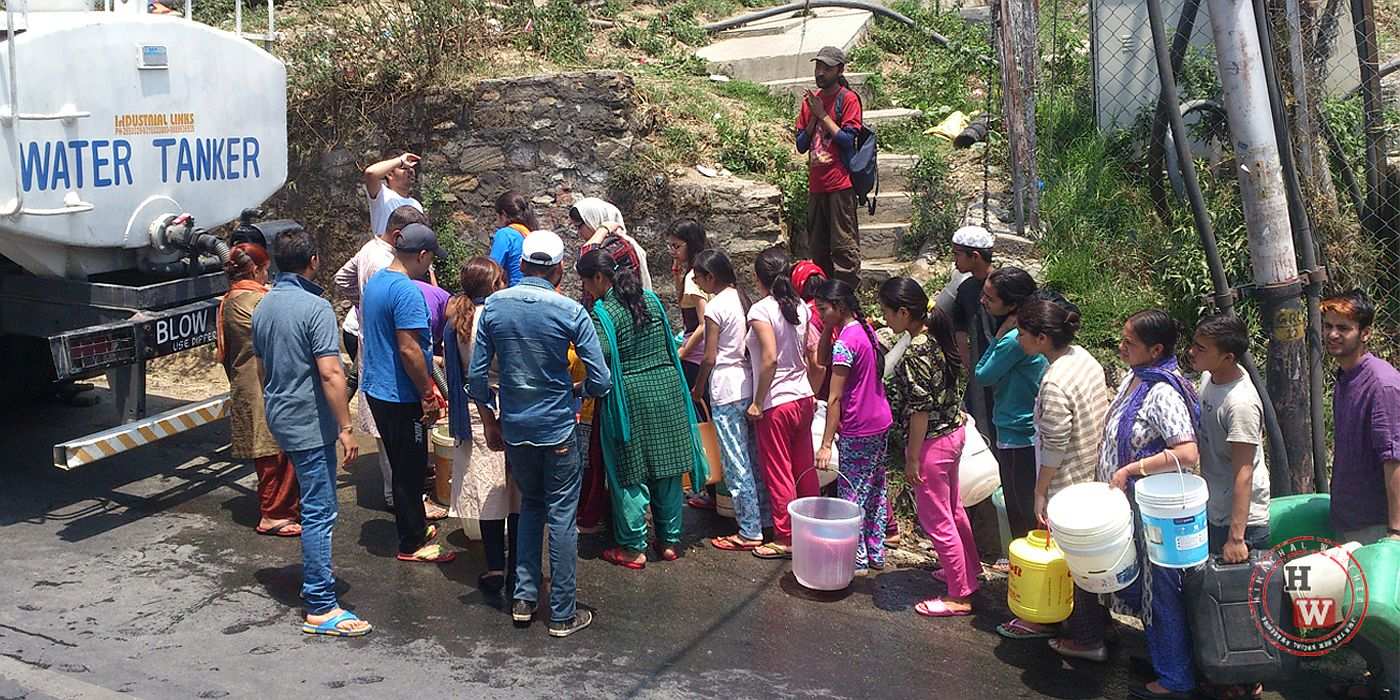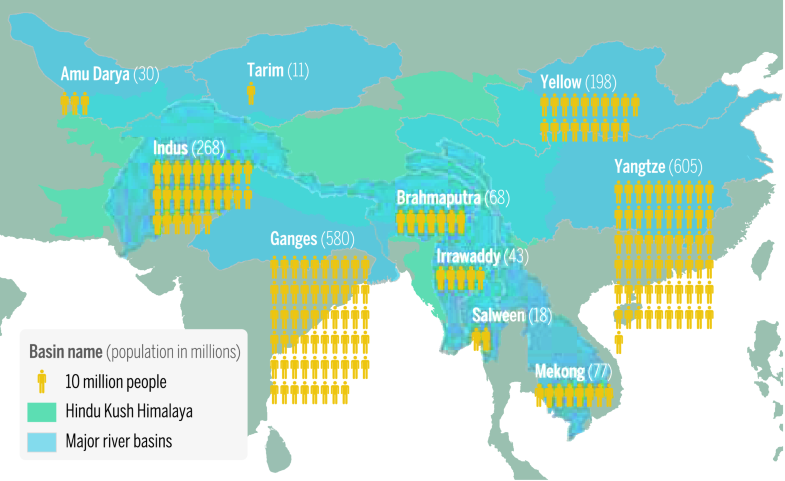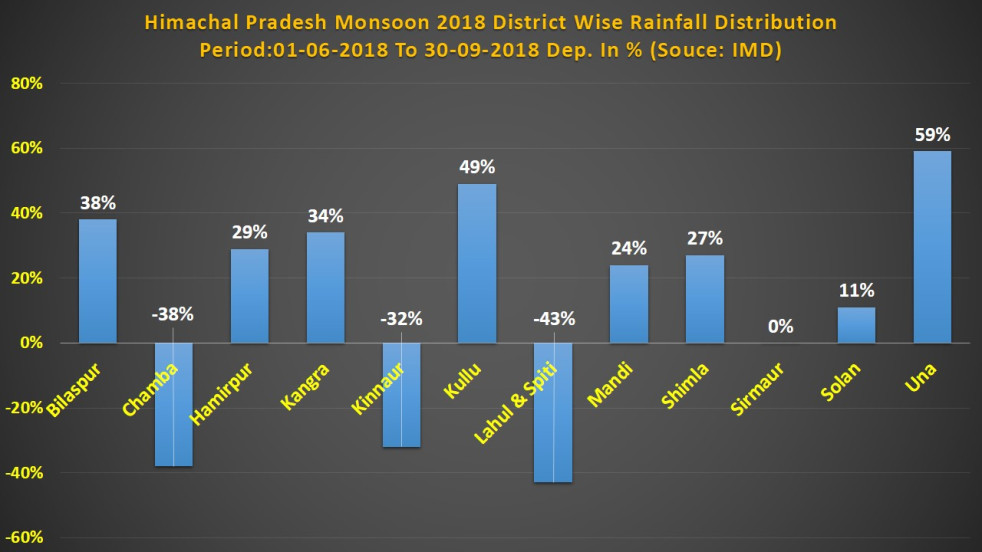Over a billion Human lives across the Asian continent rely on Himalayan waters. Being attributed as “Water Tower for Asia,” these Hindu Kush Himalayan Mountains (HKH) plays an indispensable role in ensuring water, food, energy, and environmental security for about totals 2 billion lives across the continent.
A home to the source of ten major rivers that provide water across the hills and entire Northern Plains of the country, Himalayas have long served to be water Heartland for India. But we have taken its water for granted, equating it for a free, plentiful resource, something to be unanswerable for.
Where is all this water sourced from?
Glaciers and snow melts provide substantial streamflow across the upper tract and their relative contribution increases with the altitude and proximity to glacier-snow reserves.
Another source, Groundwater, drawn from the springs of the mid-hills of the HKH is associated to river baseflow but its extent is not exactly known due to limited scientific studies on it.
There are mentionable spatial disparities in Eastern and Western wings of Himalaya. While Groundwater is overexploited in the western plains, it remains largely untapped in the eastern plains.
In winters, the western Himalaya receives at least half of its precipitation from western disturbances. Indian Monsoon is also a significant source of water for the Himalayas (June-September).
Challenges to the streamline flow:
Burgeoning cities-small towns in the hills and rapid Urbanization which is mostly unplanned, has brought along a severe water. This water stress often takes the form of crisis and denigrates water quality further, but at times it can also give rise to practices such as the reuse of partially treated wastewater for agriculture.
Poor availability of water-related Data:
There is poor concurrence regarding knowledge of the amount and distribution of precipitation at higher altitudes (above 5000 m above mean sea level). Although a very few meteorological stations do exist at these altitudes but they do not consistently provide such data.
The incumbent role and contribution of springs to overall water budgets in the region is poorly understood, be it from Springs or the runoff stored as groundwater.
Poor water management or Governance:
Constant changes in conditions of the ecologically fragile sloping landscape, dispersed settlements, unbalanced Power generation, more focus on centralized decision making, lesser voice to local communities about influencing their water-security decisions.
A few anthropogenic works at play (such as deforestation, overgrazing, unrestricted cultivation, exploitative land use resulting in soil erosion etc.) and climate change (e.g. highly variable rainfall) cause the Himalayan springs fed during the monsoon by groundwater or underground aquifers to dry up and act as a threat to livelihood for local dependent on these valuable resources.
Himachal Pradesh and impending Water Crisis:
“Tears, tears everywhere, but not a drop of water to drink” is a statement at foreplay amidst the entire Hill state.
The unprecedented water crisis looming over Shimla since last two years has yet found a way to creep in. Last year, it faced protests and even marches over to the CM’s residence.
Even a few water-starved residents initiated and others joined social media campaigns last year, informing tourists to stay away from the northern India’s famed hill during the peak holiday season.
2021 saga of continued water crisis:
This year again, Himachal Pradesh Water Minister Mahender Singh warned about an anticipated threat of a severe water crisis, which may engulf the state this summer.
On replying against a Private member’s resolution on water crisis in State Assembly, the Minister has exclaimed that drying up of water sources in Himachal has never started so early in any of the previous years.
“It’s an alarming situation. Wells, nullahs and khads have started drying up already. Even river water levels have gone down. At some places, people can now simply wade through the Beas river to cross it”.
How grave is the looming crisis?
HP has received lesser snow and rain this winter. Supposedly, melt-water from glaciers and such snow runoff regularly source groundwater and other downhill water sources such as springs, wells, bawries, lakes, rivulets, streams and rivers.
According to the Indian Meteorological Department functional in the state, the state has received only 59 millimetres of precipitation this winter being just 69 per cent less than normal.
This has severely impact water availability for current times due to lesser snowfall.
Many water schemes may be on the brink of closure plunging the state into one of the toughest times of water shortage.
The severe impact may be seen over crop availability to feed the burgeoning travelers in Summer season, fodder unavailability for drought animals. People may find it difficult to get water even for their daily basic needs. Water may become a new hot commodity in such areas where crisis may lead to unequal access to such precious resource.
How the Government hopes to cope up?
Water Minister has encouraged other Ministers for constructing small water harvesting structures in their respective constituencies to tackle the oncoming water crisis. “We will also be restarting the installation of handpumps and borewells this year as per requirement, and water harvesting tanks will be built in each subdivision of the Jal Shakti department”.

The department is also looking to explore the option of “snow harvesting” in the higher trenches of the hill state.
Since the present hill societies are more dependent on piped water supply schemes rather than traditional sources such as springs, streams and bawries, the State Government will try supply water through tankers in easily reachable parts while has requested for increased Rail connectivity to discrete unconnected regions.
Towards Water sustainability:
SDG Goal 6 ensures universal and equitable access to safe and affordable drinking water for all by 2030. Although the core fundamentals govern the SDG but attributes like water quality, wastewater management and reuse, transboundary cooperation, ecosystem services, capacity building, and cooperation have also become quite meaningful.
When we strive to attain Sustainability in the ultimate scenario, lets make sure it is equitable in terms and fairly accessible to all, irrespective of region, terrain, ethnicity or Nationality.




